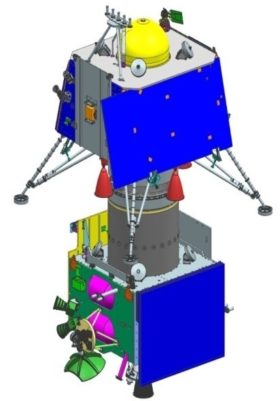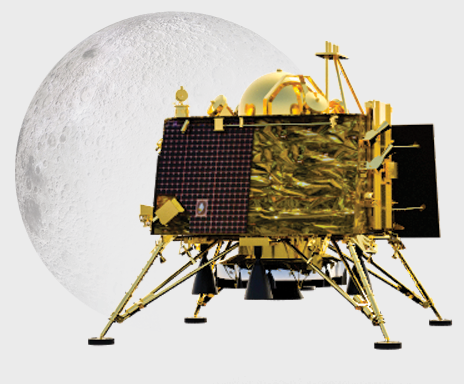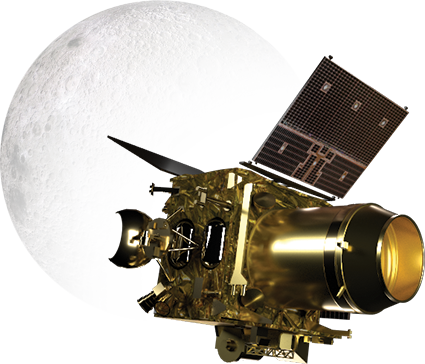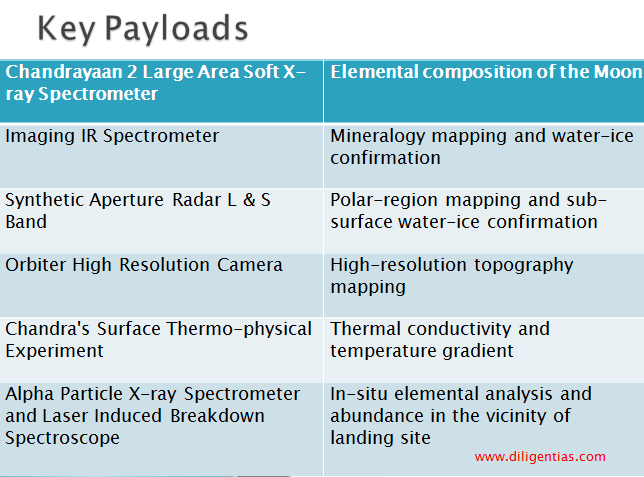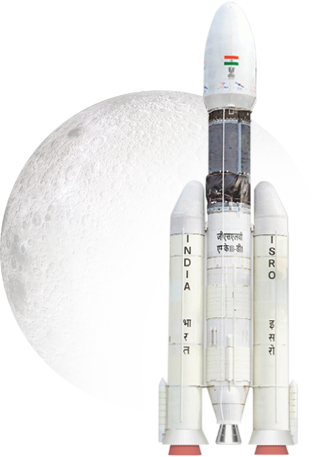Chandrayaan-2: India’s second lunar exploration mission 15/07/2019 – Posted in: RSTV
CHANDRAYAAN 2: INDIA’s SECOND LUNAR EXPLORATION MISSION
Chandrayaan 2
- After Chandrayaan-1, it is India’s second lunar exploration mission.
- Chandrayaan 2 will boldly go where no country has ever gone before — the Moon’s south polar region.
- Chandrayaan-2 will be launched from Satish Dhawan Space Center at Sriharikota onboard GSLV Mk-III.
Significance
This mission will help us gain a better understanding of the origin and evolution of the Moon.
Aim
- Expand India’s footprint in space
- Inspire a future generation of scientists, engineers, and explorers
- Surpass international aspirations
Science Experiments
Chandrayaan-2 has several science payloads to expand the lunar scientific knowledge through a detailed study of:
- Topography
- Seismography
- Mineral identification and distribution
- Surface chemical composition
- Thermo-physical characteristics of topsoil
- Composition of the tenuous lunar atmosphere,
These detailed studies will be leading to a new understanding of the origin and evolution of the Moon.
For an understanding of the Lunar composition, it is planned to identify the elements and mapping its distribution on the lunar surface both at the global and In-situ level.
Orbiter
- The Chandrayaan 2 Orbiter will be capable of communicating with Indian Deep Space Network (IDSN) at Byalalu as well as the Vikram Lander.
- The mission life of the Orbiter is one year and it will be placed in a 100X100 km lunar polar orbit.
Lander- Vikram
- The Lander of Chandrayaan 2 is named Vikram after Dr. Vikram A Sarabhai.
- He is also known as the Father of the Indian Space Programme.
- It is designed to function for one lunar day, which is equivalent to about 14 Earth days.
- Vikram has the capability to communicate with IDSN at Byalalu, as well as with the Orbiter and Rover.
- The Lander is designed to execute a soft landing on the lunar surface.
Rover — Pragyan
- Chandrayaan 2’s Rover is a 6-wheeled robotic vehicle named Pragyan, which means to ‘wisdom’ in Sanskrit.
- It can travel up to 500 m (½-a-km) and leverages solar energy for its functioning.
- It can only communicate with the Lander.
Why are we going to the Moon?
- The Moon is the closest cosmic body at which space discovery can be attempted and documented.
- It is also a promising test bed to demonstrate the technologies required for deep-space missions.
- Chandrayaan 2 attempts to increase our understanding of space.
- It will stimulate the advancement of technology, promote global alliances, and inspire a future generation of explorers and scientists.
What makes Chandrayaan 2 special?
- A 1st space mission to conduct a soft landing on the Moon’s south polar region
- 1st Indian expedition to attempt a soft landing on the lunar surface with home-grown technology
- 4th country ever to soft land on the lunar surface
- 1st Indian mission to explore the lunar terrain with home-grown technology
Chandrayaan 1
We already have discoveries made by Chandrayaan 1, such as the presence of water molecules on the Moon and new rock types with unique chemical composition.
Geosynchronous Satellite Launch Vehicle Mark-III
- The GSLV Mk-III will carry Chandrayaan 2 to its designated orbit.
- It is India’s most powerful three-stage launching vehicle to date.
- GSLV Mk-III is capable of launching a 4-ton class of satellites to the Geosynchronous Transfer Orbit (GTO).
You can follow us on LinkedIn and for more updates related to UPSC IAS Preparation, Like our Facebook Page and subscribe our Diligent IAS Youtube Channel

